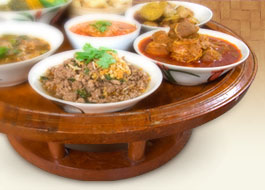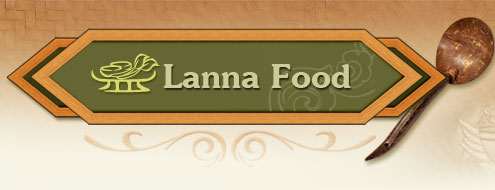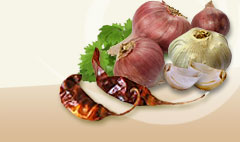Java long pepper |
|
|
 | Piper cheba Hunter |
|
| |
 | Piperaceae |
|
| |
 | Indian long pepper, Javanese long pepper |
|
| |
 | Pli chaueak, pradong kho (South); Phit phaya fai, Pan-nu, kradong ko Phaya fai, phik phua (Chinese) (Wut Wuthithaiwet, 1997, 193; Aruni Wiseetsuk, et al., 1999, p. 81) |
|
| |
 | Perennial climber, supported by roots sprouting along the nodes. Leaves simple, alternate, ovate-eliptical, acumate, cordate at the base, spear shaped, 3-5 cm. wide, 7-10 cm. long, green smooth rims. Flowers inflorescence of cylindrical spikes, 1-2 in. long, vertical. Berry green when young, reddish orange when ripe, pungent. (Aruni Wisetsuk, et al., 1999, p. 81) Vine can be used for dying fabric to obtain a light brown color, or mixed with the bark of sappan to get a reddish brown color. (Wut Wuthithamwet, 1997, p. 193) |
|
| |
 |

Dry berries are used as spice in kaeng phet, kaeng khua or lap to get rid of the unpleasant odor of fish or meat. The young berries can be eaten as fresh vegetables. Young tips can be put in kaeng khae or eaten with lap (spicy minced meat salad) (Aruni Wisetsuk, et al., 1999, p. 81) (Rattana Phromphichai, 1999, p. 2239; (Pratan Nanchaisin, personal communication, July 3, 2007) |

Leaves are peppery hot and good to relieve stomach cramps. The berry (di pli) is also spicy hot, good to treat dysentery, gassiness, asthma, cough, vertigo, hemorrhoids, loss of appetite, insomnia, epileptic seizures, to stimulate secretion of bile, and menstruation, to treat worms, muscle pains abscesses. (Wut Wuthithamwet, 1997, p. 193)
The vine can be used as an expectorant to force out phlegm, treat toothache, abdominal pain, cramps.
The roots treat paralysis, cough, dizziness, stomachache, as a tonic, and for intestinal abscess. Lanna Pharmaceutics indicates that it is a medicine to treat dizziness, mixed in snuff and a concoction to stimulate pregnancy. (Chiradet and Aranya Monosoi, 1994, p. 107)
|
|
| |
 | All year round |
|
| |
 |
Aruni Wisetsuk, et al. (1999). Phak Phuen Ban Phak Tai. Kanchana Diwiset, Ed. Bangkok: Project on text Development of the Institute of Traditional Thai Medicine, Foundation of Traditional Thai Medicine Development. (in Thai). Chiradet and Aranya Monosoi. (1994). Lanna Pharmaceutics: Lanna Herbal Medicine. Bangkok: Institute for Traditional Thai Medicine. (in Thai). Rattana Phromphichai. (1999). Di Pli. In Saranukrom Wattanatham Thai Phak Nuea (Vol. 5, p. 2239). Bangkok: The Siam Commercial Bank Foundation for the Encyclopedia of Thai Culture. (in Thai) Wut Wuthithamwet. (1997). Saranukrom Samunphrai: Ruam Lak Phesatchakam thai. Bangkok: Odean Store. (in Thai). |
|
| |
|
|




